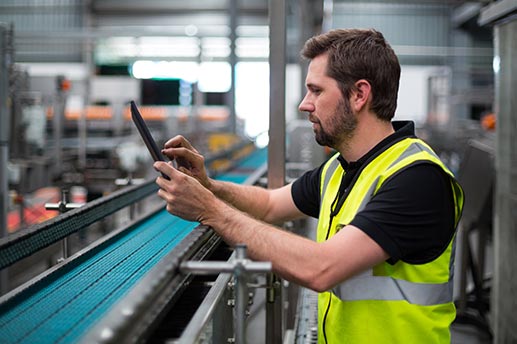5 reasons to adopt a total cost of ownership approach in your business

When you’re specifying a component for your machinery, such as a new motor or belt, it can be tempting to make your decision based on purchase price alone. However, what you don’t see at this moment in time is how much that choice will cost you over the lifespan of your machinery.
You need to know exactly what that part is going to cost you in maintenance, labour and downtime. That’s where Total Cost of Ownership (TCO) comes in, helping you to understand exactly how much a product will cost your business throughout its lifespan.
1. Understand the true cost of your business operations
When you think about the costs of running your production line, you probably think about the cost of a part, maintenance costs and the energy bills as separate entities which are unconnected. However, your choice of components can have a direct impact on the cost of maintenance, associated downtime and energy consumption.
Taking a TCO approach means looking at how these costs are interweaved and the relationship between them. By calculating Total Cost of Ownership, you’ll be able to understand the true cost implications of each and every choice of component.
2. Put the focus onto quality
It can be tempting to simply opt for the cheapest component, under the perception that you’re saving money for your business. However, if that component has a short lifespan, not only will you incur regular replacement costs, but also the associated costs of downtime, maintenance and labour.
By understanding the Total Cost of Ownership, the focus begins to shift to quality, longevity and efficiency, as opposed to solely focussing on the price tag.
3. Reduce your downtime
Downtime isn’t just an inconvenience for a business – it can be expensive too. When production grinds to a halt, profit margins begin to decrease and labour is often wasted.
Putting the focus onto Total Cost of Ownership can enable you to identify where downtime is being created and opt for components which extend maintenance intervals and reduce the risk of breakdown, keeping downtime to an absolute minimum.
4. See the bigger picture
It can be hard to see past the price tag of a component such as a motor or bearing. But what if we told you that the purchase price of a motor represents just 1% of the Total Cost of Ownership of the motor? You can add on another 2% for maintenance, but the remaining 97% of the TCO of a motor is found within the electrical energy usage.
By switching to a Total Cost of Ownership approach, you can begin to see the bigger picture. It’s not just down to the purchase price of a component, but all of the other costs that will be incurred as a result of the choices that you make during the specification process. This can include breakdowns, energy consumption, maintenance, replacement and downtime.
5. Make informed decisions
Taking a Total Cost of Ownership approach for your business doesn’t necessarily mean that you’ll be choosing the most expensive components. What is does mean is that you’ll be able to make educated and informed decisions about the best way forward when it comes to component selection, based on what’s right for your business. After all, you can’t make an informed decision without knowing all of the facts.
What Total Cost of Ownership does tell you is exactly how much your component selection will cost through the entirety of its service life, helping you to fully understand the implications of your selections.
Turn your focus to Total Cost of Ownership
It can be easy to focus on the short term when you’re specifying components for your machinery, looking at the price tags and making decisions based on the perceived cost savings that you’re making. But what if we told you that opting for lower priced components won’t always save you money?
By switching your focus onto Total Cost of Ownership, you can begin to understand the implications of every choice that you make when it comes to specifying parts for your applications. Whether it’s energy usage, maintenance costs, downtime or production rates, calculating the Total Cost of Ownership can help you to understand exactly how much each component will cost your business throughout its lifespan.
For more information about Total Cost of Ownership, or for help calculating the Total Cost of Ownership for your machinery, contact your local ACORN team today.
